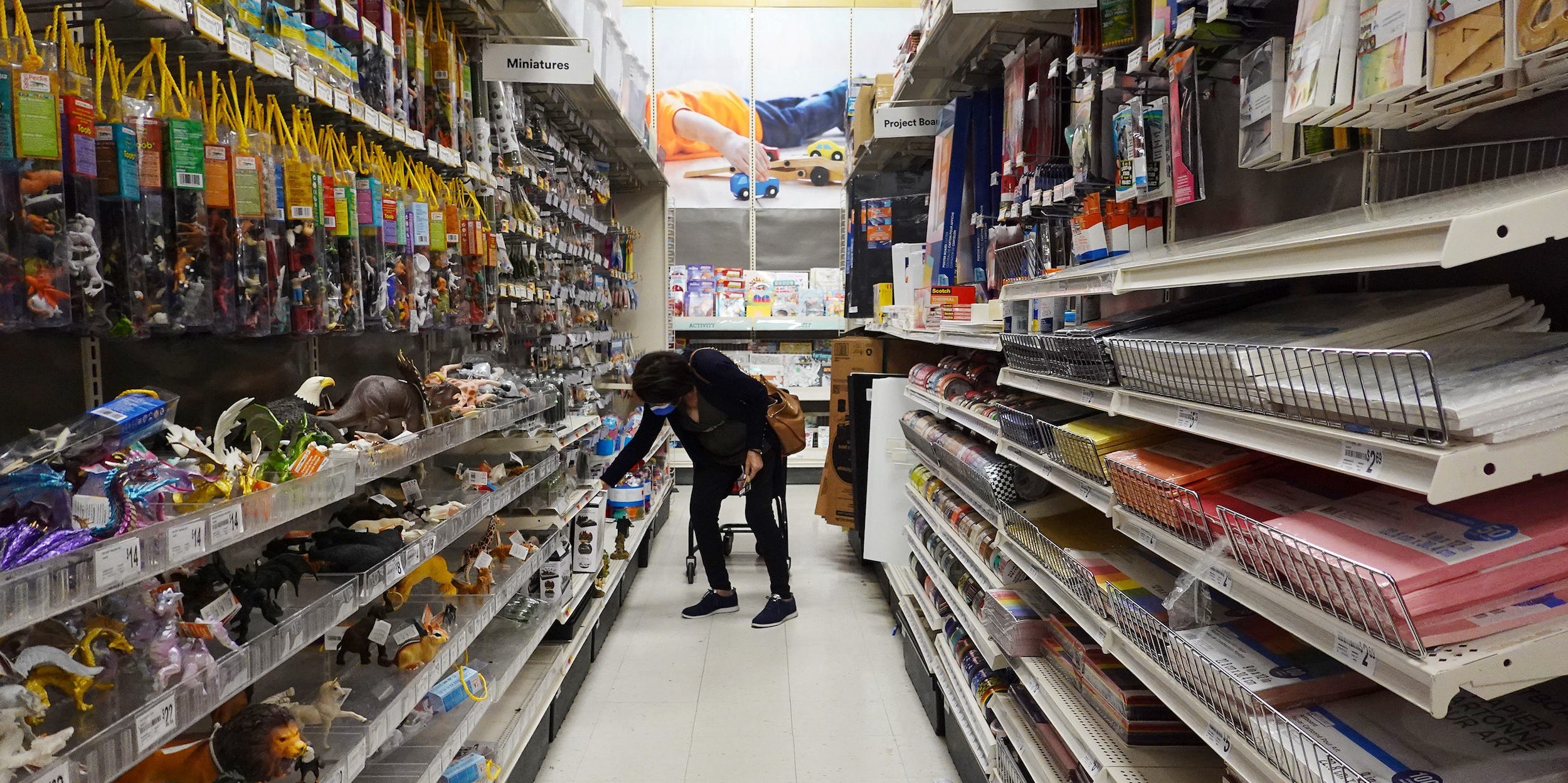
- US retail sales declined 3% in February, the Census Bureau announced Tuesday.
- The reading misses the median economist estimate for a 0.5% contraction.
- Retail sales are a popular gauge of consumer spending, which counts for 70% of US GDP.
- See more stories on Insider's business page.
Spending at US retailers slid in February as the effects of stimulus enacted late last year petered out.
US retail sales contracted 3% last month, the Census Bureau said Tuesday. Economists surveyed by Bloomberg expected sales to decline by 0.5% in February. January's blowout reading was revised higher to 7.6%.
The reading marks the fourth decline in five months. Retail sales are seen as a key gauge of overall consumer spending, and since such spending drives roughly 70% of economic activity, the Census Bureau's monthly report has taken on new importance as much of the US sits in prolonged lockdowns.
The January surge in sales trounced the median estimate of 1% growth and marked a sharp rebound in activity after months of steady decline. Economists largely attributed the uptick to $600 direct payments and boosted unemployment benefits included in the stimulus bill passed by President Donald Trump in late December.
The latest reading suggests that bump has largely played out, yet the recent drop in virus cases and improved rate of vaccination could drive the next phase of recovery.
Case counts are down, vaccinations are up
The economic backdrop shifted considerably through February. Daily COVID-19 case counts plummeted through February after hitting record highs the month prior. The US reported nearly 51,000 new cases on the last day of February, down roughly 83% from the January peak, according to The New York Times. City and state governments began slowly rolling back some restrictions in the wake of the lower counts, though nationwide measures remained in place.
At the same time, the vaccination rate steadily climbed through the month. The country vaccinated 1.7 million people per day on average at the end of the month, up from 1.3 million in January. The pace has only improved further in March, and the country is now on track to reach herd immunity in roughly five months, according to Bloomberg data.
President Joe Biden announced earlier in the month that he aims to have enough shots for every adult in the country by the end of May. With the pace of vaccinations rising and the White House pursuing even more supply, the goal remains attainable.
Stimulus bump, redux
The new data suggests the boost from December stimulus is largely played out, yet retail spending is likely to surge again this month. Biden signed a $1.9 trillion aid plan on Thursday after Congressional Democrats passed the measure without any Republican support. The package includes $1,400 direct payments, a supplement to federal unemployment benefits, and funding for state and local governments, among other tenets.
Only a few Americans have already received their stimulus checks, yet Wall Street firms have already lifted their growth expectations in connection to the bill's passage. Morgan Stanley said last week that the new package will lift gross domestic product to pre-pandemic highs by the end of the first quarter. Goldman Sachs and UBS similarly forecasted strong expansion through 2021.
Republicans and even moderate Democrats have raised concerns that the stimulus plan will overfill the hole in the economy and fuel rampant inflation. Markets have somewhat heeded such calls, with investors recently dumping Treasury bonds and shifting cash to riskier assets.
Yet recent data signals there's plenty of room for price growth before it reaches concerning levels. The core consumer price index rose just 0.1% month-over-month in February, according to Labor Department data published Wednesday. The reading landed below estimates for a 0.2% gain.
The Federal Reserve has indicated it won't lift rates until inflation steadily trends above 2%. New stimulus might once again boost spending, but a more prolonged increase in demand is likely needed to spark central bank action.
